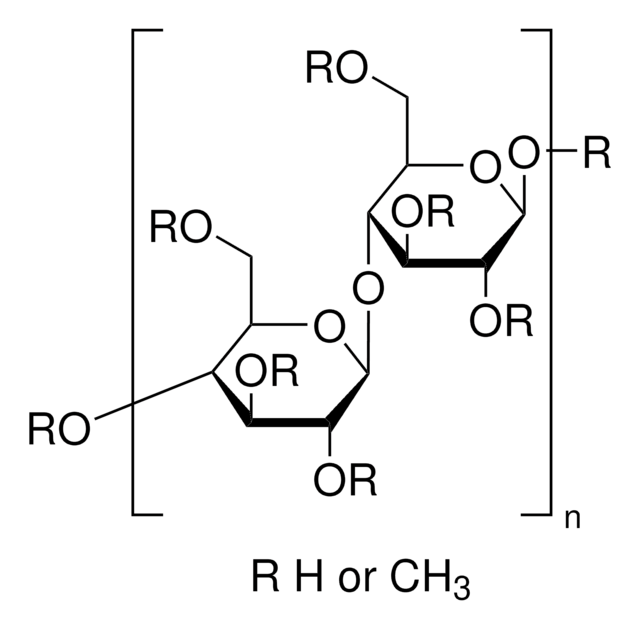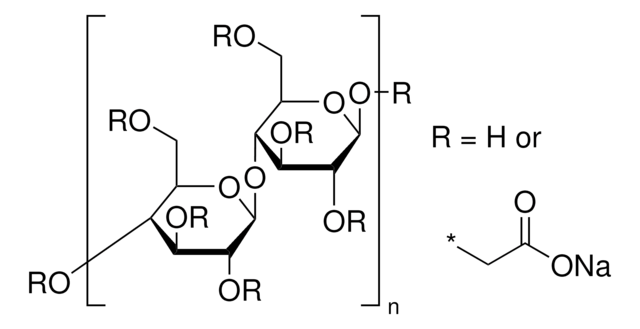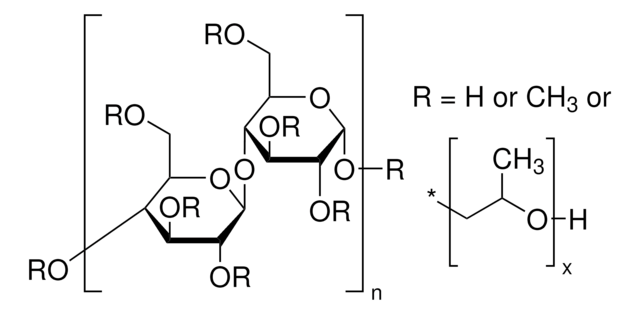About This Item
Recommended Products
biological source
wood (pulp cellulose)
form
powder
color
white to off-white
viscosity
1,200-1,800 cP, 2 % in water(20 °C)
storage temp.
room temp
SMILES string
[*]OC[C@H]1O[C@@H](O[C@@H]2[C@@H](CO[*])O[C@@H](O[*])[C@H](O[*])[C@H]2O[*])[C@H](O[*])[C@@H](O[*])[C@@H]1O[*]
InChI key
YLGXILFCIXHCMC-JHGZEJCSSA-N
Looking for similar products? Visit Product Comparison Guide
General description
Application
- as a component of an embryo medium to culture zebrafish embryos for motility assays
- to mount haploid/tetraploid zebrafish embryos on slides for live imaging
- to enhance the viscosity of artificial seawater to study the flagellar waves of Ciona spermatozoa
Other Notes
Storage Class Code
11 - Combustible Solids
WGK
WGK 1
Flash Point(F)
Not applicable
Flash Point(C)
Not applicable
Personal Protective Equipment
Certificates of Analysis (COA)
Search for Certificates of Analysis (COA) by entering the products Lot/Batch Number. Lot and Batch Numbers can be found on a product’s label following the words ‘Lot’ or ‘Batch’.
Already Own This Product?
Find documentation for the products that you have recently purchased in the Document Library.
Customers Also Viewed
Our team of scientists has experience in all areas of research including Life Science, Material Science, Chemical Synthesis, Chromatography, Analytical and many others.
Contact Technical Service


